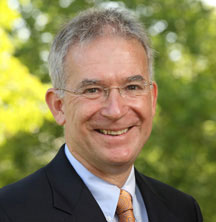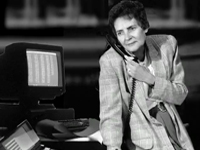The Social Implications of Preschool Education and Learning Styles
What do preschool education and learning styles have in common? Both would seem to be cornerstones of any comprehensive educational agenda. Yet the presenters at the APS 22nd Annual Convention’s Psychological Science in the Public Interest (PSPI) Symposium argued that the complex issues surrounding each topic suggest the need for closer examination. Both speakers — Robert Pianta, director of the Center for Advanced Study of Teaching and Learning at the University of Virginia, and APS Fellow Hal Pashler, director of the Learning Attention and Perception Lab at the University of California, San Diego — were recent contributors to PSPI, the APS journal dedicated to in-depth analyses of socially important issues.

Robert Pianta
As specialists in early childhood education, Pianta and his colleagues — W. Steven Barnett (Rutgers University), Margaret Burchinal (University of California at Irvine), and Kathy Thornburg (University of Missouri) — are concerned about the unsystematic approach taken by the U.S. government to educating children of preschool age (3–4 years old), a topic they explore in their upcoming PSPI report about the effects of preschool education. Currently, the federal government does not allocate money to preschool programs in a consistent way. Furthermore, the numerous preschool programs throughout the country have differing approaches and goals, as well as widely varying criteria for instructor qualifications.
Although this nonsystem lacks unified aims and standards, preschool education has been shown to narrow achievement gaps for its students. Programs with higher educational goals produce greater educational benefits. In addition, teachers who received training in areas such as childhood development, literacy, and math significantly increased the quality of instruction to their students. The most important factor in the quality of education, however, was the level of emotional and instructional interaction between each child and his or her teacher.
These data suggest an appropriate path for increased unity of program models in the future, as well as an agenda for professional development for teachers. The question, according to Pianta, is “not whether preschool matters, but how do we make it matter more?” One promising avenue investigated by the Center is standardized coaching models that focus on teachers’ actual practice and provide them feedback and examples. These aids provide not only educational material, but also numerous questions and activities specifically designed for teachers to use in stimulating interaction and discussion in their classrooms.
Pashler discussed the findings of his recent PSPI report, “Learning Styles: Concepts and Evidence.” Most people accept the widely held theory that they have a particular learning style: that they learn more efficiently when information is presented in a particular format — they are either visual or auditory learners, for example. There are many popular tests, such as the Dunn and Dunn Learning Styles Model, devoted to helping people determine their learning style. Some prestigious academic institutions endorse this concept as well, and it’s frequently applied in the business community.

Hal Pashler
However, Pashler and his colleagues — Doug Rohrer (University of South Florida), Mark McDaniel (Washington University), and Robert Bjork (University of California, Los Angeles) — wondered whether solid scientific evidence really existed to support the hypothesis that people have specific learning styles. They examined relevant studies to see whether there was convincing data that would justify the proliferation of popular materials on this subject. To prove the practical value of learning styles, the results of these studies would need to show a significant interaction between assessed learning style and mode of instruction. That is, knowing that a learner has one style should predict that he or she would learn best with a different instructional procedure than would be optimal if the learner had a different style. Although they found “plentiful evidence arguing that people differ in the degree to which they have some fairly specific aptitudes for different kinds of thinking and for processing different types of information,” Pashler and his colleagues determined that there was “virtually no evidence for the interaction patterns that would support the broader version of the learning-styles hypothesis.” This result actually came as a surprise to the researchers. Pashler even admitted that he and his colleagues were worried that they had missed convincing evidence of interactions, but he noted that 6 months after their study was published, no researchers have provided counterexamples that undermine the study’s conclusions.
By examining the facts behind preschool education and learning styles, Pianta and Pashler not only illustrated the need for researchers to increase their focus on these topics, they also conveyed just how vital these subjects are to the public interest.





Comments
what is important in any learning center is a mutual understanding between the teacher and the learner and a favorable learning environment.saying that learning requires a particular style implies that learning is one way-teacher to learner, which is extremely misleading
APS regularly opens certain online articles for discussion on our website. Effective February 2021, you must be a logged-in APS member to post comments. By posting a comment, you agree to our Community Guidelines and the display of your profile information, including your name and affiliation. Any opinions, findings, conclusions, or recommendations present in article comments are those of the writers and do not necessarily reflect the views of APS or the article’s author. For more information, please see our Community Guidelines.
Please login with your APS account to comment.